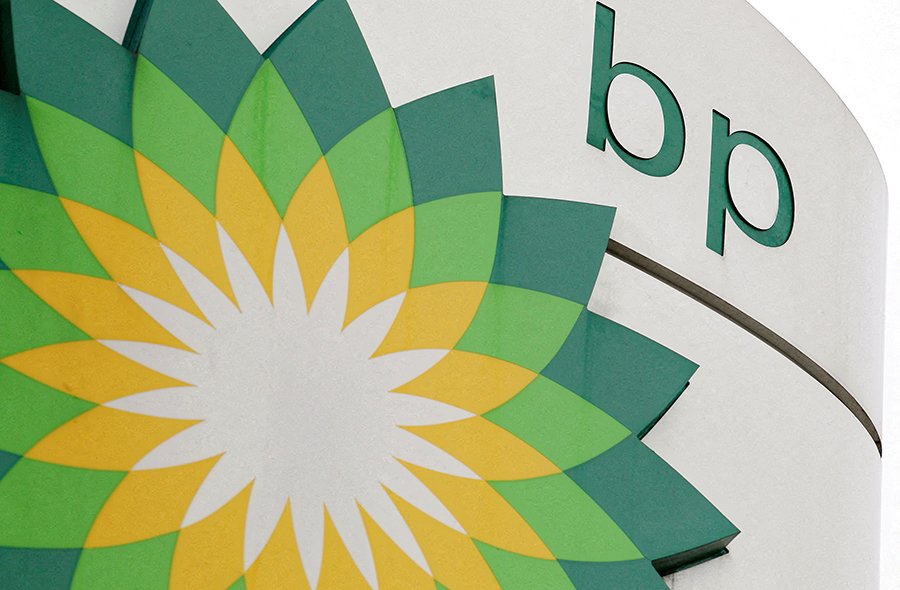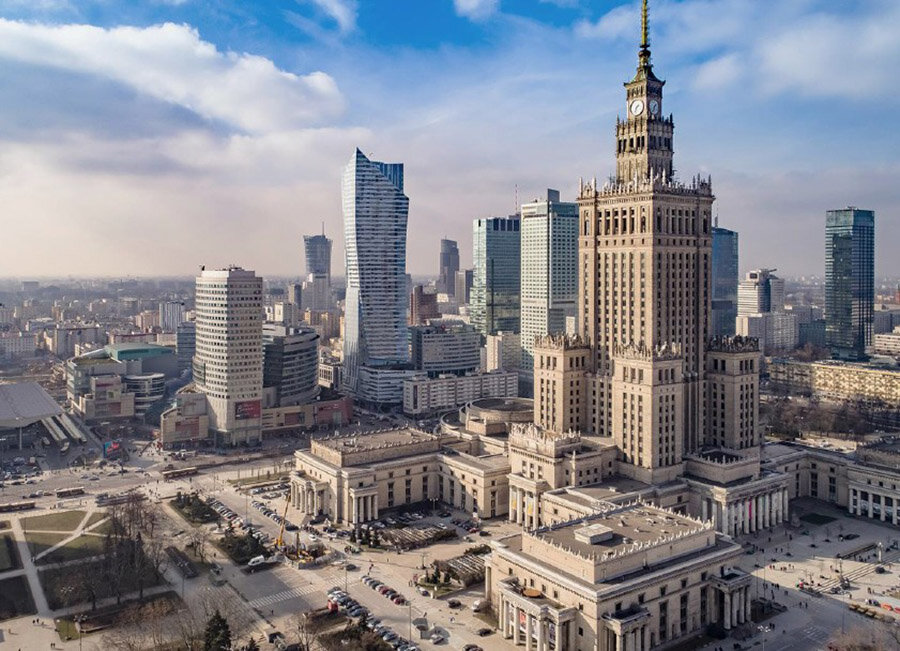читайте также
 Spain’s Real Estate: Record Prices and Falling Yields
Spain’s Real Estate: Record Prices and Falling Yields
 Fuel crisis at Seattle Airport: the Olympic Pipeline outage has disrupted supplies
Fuel crisis at Seattle Airport: the Olympic Pipeline outage has disrupted supplies
 European Hotel Construction Market Breaks Records: Upper Upscale Segment Reaches New Heights
European Hotel Construction Market Breaks Records: Upper Upscale Segment Reaches New Heights
 Middle East Hotel Construction Pipeline Hits Record High: 659 Projects and 163,816 Rooms Under Development
Middle East Hotel Construction Pipeline Hits Record High: 659 Projects and 163,816 Rooms Under Development
 New Rules for Greece’s Golden Visa: What Changes for Investors
New Rules for Greece’s Golden Visa: What Changes for Investors
 Holiday Travel 2025: Less Spending, More Generational Shifts — Deloitte’s New Forecast
Holiday Travel 2025: Less Spending, More Generational Shifts — Deloitte’s New Forecast
Вusiness / Real Estate / Investments / Analytics / Research / Poland / Real Estate Poland 26.06.2025
Poland's Real Estate Market: From Housing to Logistics, Investment Opportunities Expand in 2025

Poland's real estate market is experiencing uneven development. While macroeconomic conditions are improving, the residential sector continues to see a decline in sales. Conversely, investments in commercial real estate are on the rise, demand in the hotel industry is recovering, and business activity in logistics and retail is strengthening. Experts forecast that in 2025, the greatest growth potential lies in the rental sector, particularly in the PRS (Private Rented Sector) and PBSA (Purpose-Built Student Accommodation) formats.
Residential Real Estate
In 2024, approximately 200,000 new apartments were constructed in Poland, primarily ranging from 52 to 55 square meters with basic finishes, as noted in a JLL report. Despite this, the country continues to face a housing shortage exceeding 1.5 million units. CBRE reports that 62% of all completed properties nationwide were in the primary market, with this share exceeding 90% in the largest cities.
Sales and Rentals
A survey by RynekPierwotny.pl indicates a growing interest from foreign buyers. EADaily reports that in 2023, over 14,000 properties in Poland were purchased by foreigners, increasing to 17,330 in 2024. Ukrainian citizens led the purchases, acquiring approximately 380,000 square meters of residential space, often buying multiple units in new developments. Ukrainian intermediary agencies have also entered the market, raising concerns among Polish realtors about market practices.
Belarusians ranked second with 111,000 square meters. Russians, Indians, Britons, and Vietnamese were also among the top foreign buyers. Warsaw led in transactions with foreigners (3,535 apartments), followed by Kraków (1,523) and Wrocław (1,491).
In 2024, 39,649 new residential units were sold across six major markets, a 31.18% decrease from 2023. However, housing loan volumes increased by 43.3% to 83.9 billion zlotys, despite high interest rates at 7.57%. In the first quarter of 2025, 9,100 transactions were recorded, a 17.47% decline, attributed to high prices.
According to Global Property Guide, Bydgoszcz remained the most affordable in March, with average secondary market prices at 7,417 zlotys ($1,916) per square meter, and primary market prices at 9,389 zlotys ($2,426). Warsaw had the highest prices: 16,459 zlotys ($4,253) and 16,383 zlotys ($4,233), respectively, followed by Kraków and Wrocław.
The average rental rate nationwide was 3,581 zlotys ($925), a 2% increase from the previous year. Regional variations are significant: from 2,019 zlotys ($522) in Kielce to 4,906 zlotys ($1,268) in Warsaw. Kraków, Tricity, and Wrocław follow the capital in rental costs. Gross rental yields increased from 6.03% in September 2024 to 6.13% in spring 2025, with the highest yields in Bydgoszcz (6.65%), Warsaw (6.49%), and Gdańsk (6.27%). Poznań had a more modest yield of around 5.36%.
New Formats
Experts note growing demand in new formats such as the institutional rental sector (PRS) and student housing (PBSA). By the end of 2024, Poland had 22,300 rental apartments, a 36% increase from 2023, with about a quarter added within a year. Geographically, the PRS sector is concentrated in major cities: 43% in Warsaw, 19% in Wrocław, and 15% in Kraków. CBRE expects this volume to increase by another 37% in 2025, potentially exceeding 40,000 units by 2027.
PRS projects offer an average yield 4% higher than traditional rentals. Developers and investors are increasingly adopting this model for its stability and lower dependence on mortgage fluctuations. In the PBSA segment, the influx of foreign students reached 107,000 in the 2023/24 academic year (8.6% of the total student population). However, the number of available beds remains insufficient, with 13,000 in private student residences and about 11,800 under development. Warsaw alone faces a shortage exceeding 60,000 beds, indicating strong investment potential for years to come.
Experts anticipate further price increases in the housing sector but believe they will be moderate. Some analysts observe stabilization amid low demand. Positive influences may include a reduction in the key interest rate and easing geopolitical tensions.
Hotel Industry
Poland's hotel real estate market showed signs of recovery in 2024 after the pandemic downturn. CBRE data indicates that occupancy and overnight stays approached pre-COVID levels: about 58 million in 2023 and over 50 million from January to November 2024. Domestic tourism remains dominant, with foreign travelers accounting for about 25% of all overnight stays (down from 30% pre-pandemic).
Foreign guests primarily came from Germany (23%), Ukraine (13%), the UK (9%), and the USA (7%). Business travel also supports demand, with a forecasted increase in such visits in 2025, combining business and leisure purposes. The MICE sector (Meetings, Incentives, Conferences, and Exhibitions) is expected to recover, despite competition from online formats.
The number of hotel rooms in 2024 increased by 9% compared to pre-pandemic levels and by 14% since 2020. Growth is particularly notable in the four- and five-star segments, which saw a 26% increase. Conversely, the number of budget hotels (1–2 stars) declined by 10%, reflecting a general trend toward higher quality. Modern guests expect comfortable accommodations and a wide range of additional services, from convenient common areas to wellness and personalized services.
In 2025, over 20 new hotels with nearly 5,300 rooms are scheduled to open, including properties in Warsaw, Kraków, Gdańsk, Wrocław, as well as coastal and mountain regions, Lublin, and Opole. Most are developed by chain operators, with some hotels opening after major renovations.
Key Trends:
ESG (Environmental, Social, and Governance): Hotels are implementing green technologies, reducing plastic use, and transitioning to renewable energy sources.
Technological Advancements: Mobile check-ins, digital keys, and smart rooms are gaining popularity.
Personalization and Wellness: There's increasing demand for wellness and individualized offerings.
However, challenges persist, including staff shortages, rising operational costs, and competition for clients amid an expanding range of services. Overall, expert forecasts for Poland's hotel sector in 2025 are positive, especially with stabilizing household incomes and the recovery of international mobility.
Industry and Logistics
Poland's industrial and logistics real estate market remains resilient despite global geopolitical tensions and moderate new construction rates. In 2024, the total leased space reached 5.86 million square meters, the third-highest on record. Of this, 3.58 million square meters were net leases, a 5% increase from the previous year.
Vacancy rates remained stable at 7.4% in December 2024. Throughout the year, it exceeded 8%, but demand strengthened in the fourth quarter, improving the figures. In 2025, available space is expected to decrease gradually.
Rental prices have remained steady. Tenants are increasingly securing more favorable terms, especially outside major locations. The balance has shifted in their favor, transitioning the sector from a "landlord's market" to a "tenant's market."
New construction rates are moderate. By the end of 2024, 1.76 million square meters were under construction, but only 272,000 square meters commenced in the fourth quarter, comparable to early pandemic volumes. The average deal size decreased by 3%, but large agreements (over 50,000 square meters), particularly in the retail segment, remain significant.
Key Trends:
Supply Chain Localization: Companies are relocating logistics operations closer to consumers, supporting domestic warehouse demand.
Sustainability: There's growing interest in modern warehouses that reduce energy costs.
Quality Focus: Tenants increasingly prefer modern facilities with high technical standards.
Investors are mindful of risks related to U.S. foreign policy and the conflict in Ukraine, as these factors could impact tenants.
Office Real Estate
Poland's office real estate market is experiencing low new construction rates and limited developer activity. The total office space under construction is only 400,000 square meters, 60% below the five-year average. Amid this, interest in unfinished projects is growing, and the share of pre-lease agreements is increasing. In Warsaw, such deals account for 46% of total leases, with Kraków and Wrocław exceeding 50%.
In 2024, the vacancy rate in the capital was 10.5%, but it's expected to decrease to 7.5% within two years. Demand is concentrated in central areas and high-quality buildings, while outdated spaces in less popular zones are increasingly being repurposed, including conversions to PRS rentals. This transformation helps mitigate oversupply in the market.
Tenants prioritize quality, intensifying competition for high-class offices that meet ESG standards. Buildings with zero emissions and energy-efficient infrastructure are particularly sought after. Given tenants' high expectations, property owners are compelled to adapt by revising strategies and modernizing older buildings.
The market exhibits clear segmentation: desirable locations (mainly central Warsaw) face supply shortages and rising rents, while other areas experience weak demand. This polarization effect may signal the start of a new market cycle in the next two years, according to CBRE.
Overall office demand remains stable, with expected annual growth of 5–10%, supported by the increase in local companies and renewed interest in office work post-pandemic. However, space optimization continues, with remote work formats still widely used.
Retail
Poland's retail real estate market continues its transformation in response to evolving consumer preferences. Vacancy rates in metropolitan areas have declined to an average of 3.4%, though regional differences persist: Lodz, Krakow, and Szczecin report vacancy rates under 2.1%, while Wroclaw sees rates up to 5.4%. These variations highlight differing recovery speeds depending on regional infrastructure and demand profiles.
In 2025, the trend of transforming shopping centers into multifunctional spaces is expected to strengthen. Modern and revamped retail centers increasingly feature wellness zones, food courts, sports and leisure areas. Particular focus is placed on value retail and everyday consumer goods stores (drogerie). According to a CBRE survey, 72% of retailers plan to expand, mainly within the affordable retail segment.
Simultaneously, the share of online sales continues to grow (11% in 2024, with 64% population reach), driving the trend toward omnichannel integration. Brick-and-mortar stores are adapting to improve customer experience and digital infrastructure, a crucial strategy for attracting and retaining shoppers. Major challenges include limited availability of premium retail space, rising competition in sectors such as fashion and dining, and the need for agility in responding to shifting demand.
Investment Market
The year 2024 marked a recovery phase for Poland's real estate investment market. Transaction volumes exceeded €5 billion – nearly 2.5 times higher than in 2023, matching pre-crisis levels of 2020–2022. Activity rose across sectors, with office and retail transactions nearly tripling.
Among the highlights were three mega-deals valued between €280 and €405 million, significantly boosting annual volume. Offices accounted for 33% of the market, retail for 32%, and logistics for 25%, pushing residential and hospitality to a combined 10%, consistent with the previous year.
Quarterly deal distribution was uneven, with the second half of the year, particularly Q4, representing 46% of the annual total – the strongest post-pandemic quarter and the second-highest on record. According to the Investor Intentions Survey, 23% of European investors in 2024 believed the market had entered a growth phase. Optimism strengthened in 2025, with most expecting a recovery in H2.
International investor interest remains strong. Poland is ranked as the most attractive destination in CEE and one of the top three in Europe for expected returns. Warsaw ranks fifth among European cities for overall investment and third in the logistics and industrial segment.
Investment strategies are increasingly favoring low-risk, high-yield assets, but there is growing appetite for value-add and management-intensive assets, particularly in residential and alternative sectors. Although offices represent a large transaction share, investor selectiveness is growing, shifting toward high-quality, energy-efficient buildings.
CBRE forecasts further recovery in 2025. Interest rate cuts will reduce borrowing costs and compress yields, boosting asset attractiveness. Supply expansion and improved financing conditions will support this growth.
Poland outperformed the CEE region in attracting cross-border capital, with its investment volume only slightly trailing that of the entire rest of the region. Warsaw ranks among the top three European cities for foreign investment, behind only the UK and Spain.
Domestic investor activity also increased: in 2023, they accounted for 20% of deals (16 transactions); in 2024, their share rose to 32% (41 transactions) worth nearly €500 million, representing 10% of total volume. These investments are typically niche-focused. Key external capital sources include the UK, Czechia, and Nordic countries.
Overall sector dynamics remain positive: capitalization is growing and investor interest is rebounding. PRS and student housing continue to attract attention, and interest in hotels and retail is resurging.
Although offices still hold a significant share of transactions, they are losing their anchor status, with investors increasingly shifting focus to diversified asset types. Industrial and logistics properties remain a priority among regional players, despite a slight decline in market share.
Sustainability criteria are becoming decisive in investment decisions. Non-compliant assets are losing value due to costly upgrades, while ESG-certified buildings benefit from stable cash flows, low vacancy rates, and reduced operating expenses. These assets are expected to see yield compression, reflecting their strong investment appeal.
Poland’s Economy in 2025
According to CBRE, Poland's GDP grew by 2.9% in 2024, one of the strongest performances in Central and Eastern Europe. Forecasts for 2025 remain optimistic, with growth expected to accelerate to 3.4%, ranking Poland third among all European economies.
Poland remains the largest consumer market in the CEE region and one of its top exporters. In 2023, the country ranked 22nd globally for merchandise exports, accounting for 1.52% of world trade—a record high. This export momentum is supported by strong private and public investment, bolstered by local government spending and national infrastructure programs.
Inflation, previously a major concern, has started to decline. By December 2024, the annual CPI had dropped to 4.7% (from 6.2% a year earlier), with an average of 3.7% for the year—down from 11.4% in earlier years. This moderation opens the door for Poland’s central bank to cut interest rates in 2025, easing credit conditions and boosting real estate affordability.
Conclusion
Given the macroeconomic backdrop and market trends, the outlook for Poland’s real estate market in late 2025 and 2026 is moderately positive. The European Commission projects GDP growth of 3.3% in 2025 and 3.0% in 2026, alongside continued declining inflation and a stable labor market.
The rental housing market is expected to remain the most resilient segment. The PRS sector continues to expand through new projects and office redevelopments, supported by limited mortgage affordability. The PBSA (student housing) market also shows solid demand, especially in Warsaw, where bed shortages exceed 60,000 units.
The hospitality sector is poised for further recovery, fueled by both tourism and bleisure (business + leisure) travel. Logistics remains stable, but with signs of oversupply in some submarkets, investors are advised to focus on urban logistics and last-mile delivery assets.
In office real estate, the trend toward polarization continues: modern buildings in central locations are in demand, while older stock is being repurposed, often for PRS conversions. The retail market is rebounding, especially retail parks and value-focused stores, aided by rising consumer incomes and sentiment.
Overall, Poland’s real estate market in 2025 is grounded in strong fundamentals. Investment focus is shifting from short-term capital gains to stable yields, operational efficiency, and compliance with ESG standards. Segments with the highest strategic value include PRS, PBSA, core hospitality, and energy-efficient logistics.
Подсказки: Poland real estate, housing market, commercial property, rental sector, logistics, hotels, student housing, PRS, PBSA, ESG, investment, Warsaw, CBRE, JLL, 2025 trends, European property





